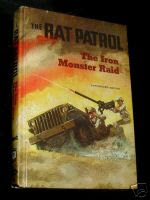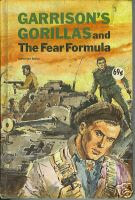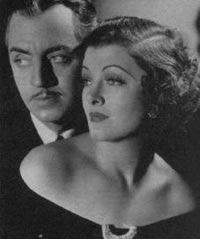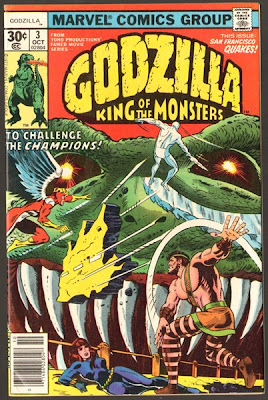
As with DC's The War That Time Forgot series or Dell/Gold Key's Turok, Son of Stone, some ideas work simply because they are unashamedly geeky. This was certainly the case in the 1970s, when Marvel Comics got the rights to do a comic book featuring Toho Studio's star monster Godzilla.
Rather than do something with a seperate continuity, it was decided to simply drop the big green guy down into the middle of the Marvel Universe. Writer Doug Moench and artist Herb Trimpe seemed to have thought the implications of this through pretty thoroughly, then began to have fun with it.
So when Godzilla shows up in Alaska and starts whip-snapping the Alaskan pipeline around, it seemed only natural that a SHIELD helicarrier would be dispatched to deal with him. Poor Dum Dum Dugan is in charge of the operation and spends the next two years in a constant state of frustration as he tries to find some way of dealing with the mutant lizard. This by itself was cool. Dum Dum had been a supporting character for years, both in Sgt. Fury and the Howling Commandos and in the SHIELD stories that ran in Strange Tales. As a high ranking and experienced SHIELD agent, it made good solid comic book sense for him to be in charge of the anti-Godzilla forces.
The connection to the Marvel Universe continues through each issue. When Godzilla attacks San Francisco, the Champions help drive him off. A little bit into the seiries, Dum Dum suddenly slaps his forehead with a "why didn't I think of this before" and orders that someone get in touch with super-scientist Hank Pym as soon as possible. Soon after, Godzilla's getting squirted with several tons of Pym's shrink gas.
But even a pint-sized Godzilla is trouble. Getting loose in the sewers of New York, he has an epic fight with a rat. He begins to slowly grow again and is maybe 20 feet tall when he throws down with Ben Grimm of the Fantastic Four in the Museum of Natural History. Smothered unconscious by Mr. Fantastic (who encases the monster in his pliable body), he's then tossed through Doctor Doom's time machine, on the assumption that he'll be happier back in a prehistoric age. 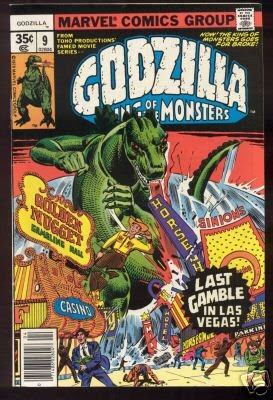

This leads to first a fight against Moon Boy and Devil Dinosaur, then a team-up with them against some evil cave men. Godzilla's radioactive nature causes the time machine to eventually sling-shot him, now full-sized again, back to modern Time Sqaure. Some problems just won't go away. At least not until the book is cancelled, which happens after SHIELD and the Avengers manage to lure Godzilla out into the Atlantic Ocean.
This series is a lot of fun for any Godzilla/comic fan, combining the big guy with the comic book world in ways that make comic book sense and maintains Marvel continuity. Trimpe's art is good and holds up well in the recently published "Essential Godzilla" despite the loss of color. The series ran 24 issues and there were only a couple of minor missteps during its brief run. A two-part story in which Godzilla essentially helps round up some cattle rustlers was very weak. More annoying was a completely unnecessary supporting character: a kid (the nephew of a Japanese scientist whose brought in by SHIELD as a Godzilla expert) who keeps whining undendlingly to everyone about how Godzilla isn't evil and shouldn't be hurt. The little snot is a walking advertisement for the need to spank children.
But despite these flaws, the series remains entertaining throughout its entire run. It's well worth taking the time to read.

